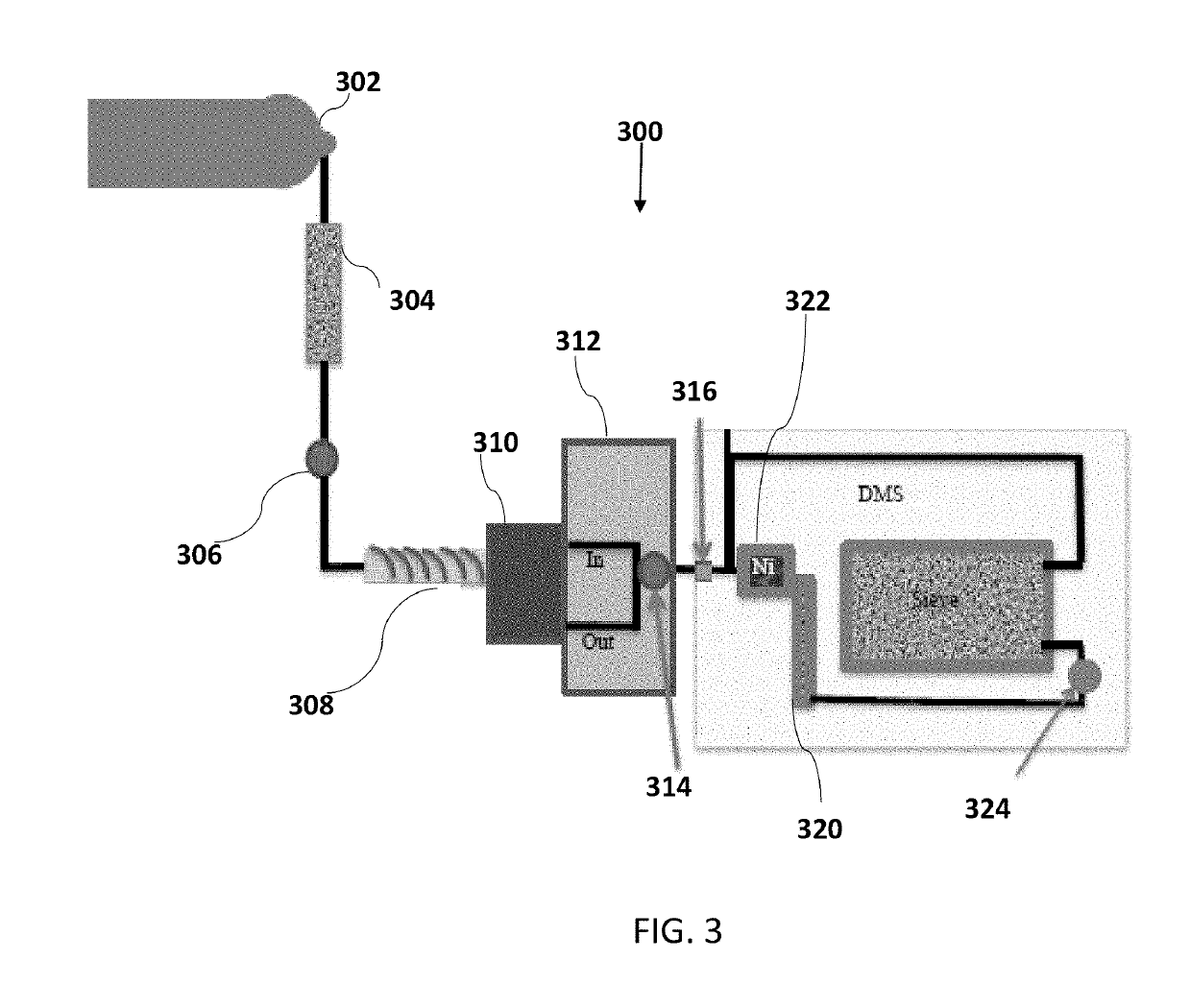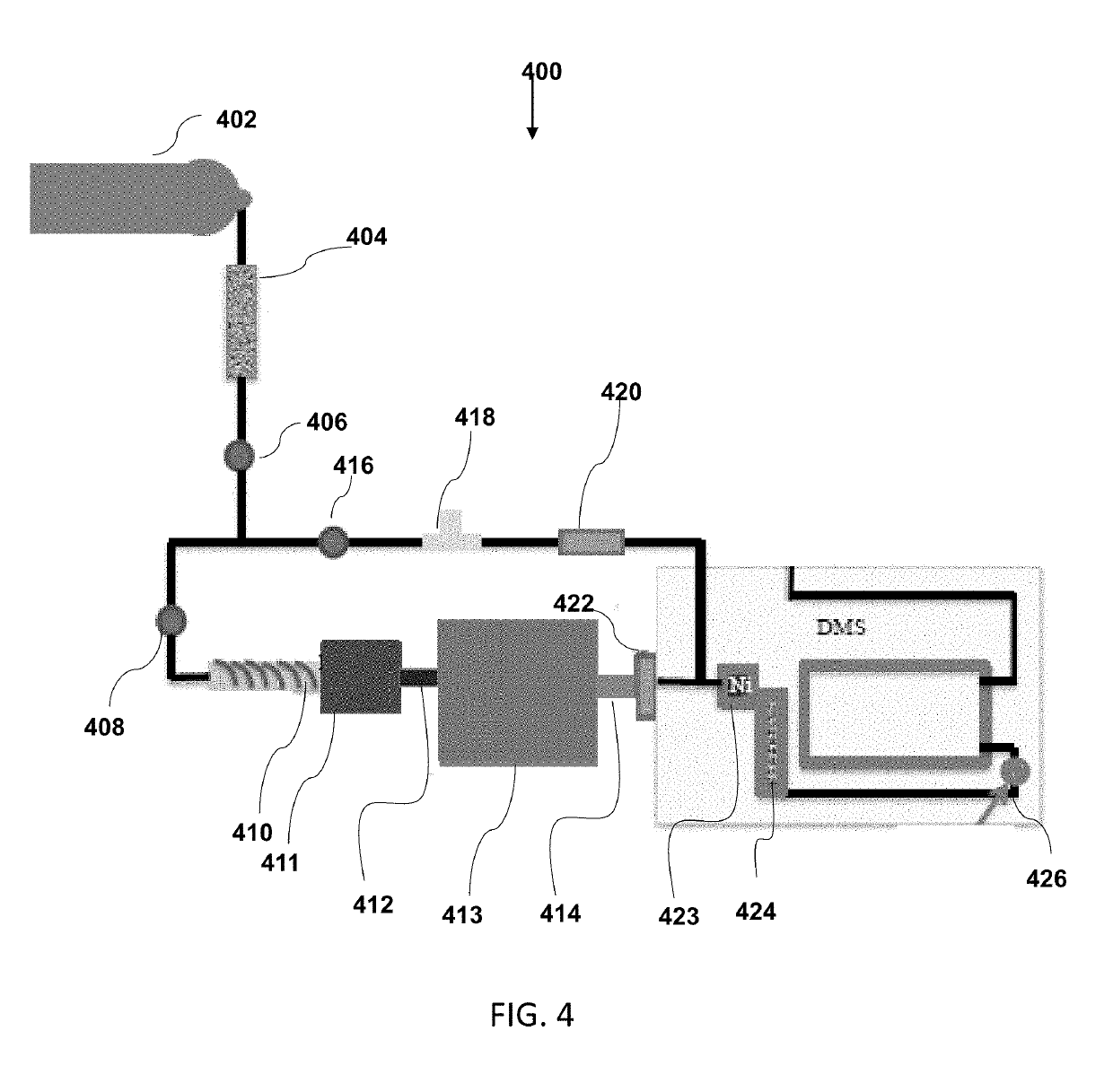Particle-based drug detection method and device embodiments
a drug detection and particle technology, applied in the field of particle-based drug detection methods and device embodiments, can solve the problems of inability to collect or detect in the same manner, detection difficulty, and inability to always identify thc in blood samples
- Summary
- Abstract
- Description
- Claims
- Application Information
AI Technical Summary
Benefits of technology
Problems solved by technology
Method used
Image
Examples
example 1
[0067]In this example, pre-inhalation and post-inhalation breath samples were obtained from 14 different volunteers. 24 sample sets total were collected and the samples included 2 to 3 pre-inhalation breath samples and 2 to 3 post-inhalation breath samples for each set. These breath samples were analyzed using a differential mobility spectrometer (DMS) and a drift tube ion mobility spectrometer (DT-IMS). Overall, over 400 spectra were obtained from pre-inhalation and post-inhalation breath of marijuana inhaling volunteers.
[0068]The volunteers were advised to achieve a high of a self-assessed level between 4 to 6 on a scale of 1 to 10. The volunteers were recruited and included both males and females between the ages of 21- to 35-years old. Breath samples were collected by having a subject breath into a collection tube for a time sufficient to provide one minute's worth of exhaled breath. The particles expelled from the subject's breath were collected on a tube comprising an absorben...
example 2
[0069]In this example, a breath collection system was used to capture breath samples from volunteers and trap the THC-containing particle samples. The breath collection system comprised a breath mouthpiece, a protective body, and a particle-trapping component (see, for example, FIG. 1). The breath mouthpiece was a commercial FDA-approved mouthpiece originally designed for the AlcoHAWK CA2010 / Avanti breathalyzer (Pleasant Prairie, Wis.). Each breath mouthpiece was individually wrapped in plastic to insure it remained sterile. The protective body was designed to protect the particle-trapping component from any outside contaminates while still allowing the breath mouthpiece to fit directly into the particle-trapping component. The protective body was a hollow 3.8 cm×3.7 cm cylinder made out of black delrin. Each end had a screw cap that could be taken off. One end cap had a hole that fit the breath mouthpiece and the other end had a showerhead design of small holes, a design feature wh...
example 3
[0093]In this example, particle samples obtained from subjects' breath were evaluated to determine potential interfering chemicals in the breath samples. A breath collector device comprising a particle-trapping component as described herein was used along with a thermal desorption system as described herein. Drift tube IMS was used as the detection technique. The DT-IMS was used and operated in the positive ion detection mode where a voltage of 7000 V was applied to the first ring of the drift tube by a Bertan high voltage power supply (Hauppauge, N.Y.) to create an electric field of 660.38 V / cm across the 10.6 cm long drift tube. The drift tube was heated by two 300 W Watlow cartridge heaters (St. Louis, Mo.), which were inserted into the outer metal heating case. An Omega CN9000A temperature controller (Stamford, Conn.) regulated the temperature of the drift tube. The temperature of the drift tube was set to 150° C. throughout this example, and was checked daily by a thermocouple ...
PUM
| Property | Measurement | Unit |
|---|---|---|
| temperature | aaaaa | aaaaa |
| temperatures | aaaaa | aaaaa |
| ion mobility spectrometry | aaaaa | aaaaa |
Abstract
Description
Claims
Application Information
 Login to View More
Login to View More - Generate Ideas
- Intellectual Property
- Life Sciences
- Materials
- Tech Scout
- Unparalleled Data Quality
- Higher Quality Content
- 60% Fewer Hallucinations
Browse by: Latest US Patents, China's latest patents, Technical Efficacy Thesaurus, Application Domain, Technology Topic, Popular Technical Reports.
© 2025 PatSnap. All rights reserved.Legal|Privacy policy|Modern Slavery Act Transparency Statement|Sitemap|About US| Contact US: help@patsnap.com



